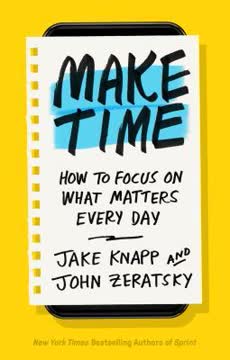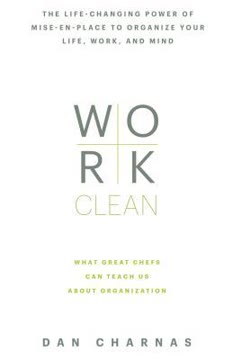重点摘要
1. Mise-en-place:厨师的组织和效率秘诀
Mise-en-place是一种专注和纪律的传统,一种工作和生活的方法。许多厨师称其为一种生活方式。
厨师的哲学。 Mise-en-place,法语意为“放置到位”,不仅仅是组织烹饪的食材和工具。这是一套专业厨师用来在工作中追求卓越的全面价值观和行为体系。这种哲学包括:
- 准备:收集资源并提前规划
- 过程:高效执行任务并优化方法
- 存在:全身心投入并在当下保持清醒
普遍应用。 虽然起源于厨房,mise-en-place的原则可以应用于任何职业或生活的各个方面。这个系统帮助个人:
- 有效管理时间
- 优化空间以提高生产力
- 在混乱中保持专注
- 持续交付高质量的结果
2. 规划为先:诚实对待时间和每日准备
确保你的工作站干净,接下来的事情都会顺利进行。
规划的力量。 厨师们将规划放在首位,认识到准备是成功的关键。这包括:
- 现实地评估时间需求
- 按顺序安排任务
- 预见挑战并准备解决方案
每日实践。 实施30分钟的“每日整理”以:
- 清理物理和数字工作空间
- 审查和更新任务列表和日历
- 规划第二天的活动
- 收集必要的资源
通过将规划作为不可妥协的习惯,你为成功奠定了基础,并减少了全天的压力。
3. 安排空间和优化动作以减少摩擦
没有人天生就会这样移动。你不会经常想,“今天我要以最有效的方式收拾杂货。”
人体工学设计。 创建最小化不必要移动并最大化效率的工作空间:
- 将工具和资源放在触手可及的地方
- 将相关物品分组
- 消除杂乱和不必要的物品
有意识的动作。 练习和优化你的动作以减少浪费的能量:
- 尽可能同时使用双手
- 尽量减少跨越身体中轴线的动作
- 将相关任务串联起来以实现更顺畅的工作流程
通过优化你的空间和动作,你减少了身体和精神的疲劳,使你能够将更多的精力集中在实际工作上。
4. 随时清理:持续维护你的系统
如果你不能清理,你就不能烹饪。你的烹饪方式反映了你的外表。
持续维护。 不要等到杂乱堆积起来,而是:
- 在工作时随时清理和组织
- 使用后立即将工具和材料归还到指定位置
- 定期擦拭表面
精神清晰。 一个干净的工作空间促进了清晰的思维:
- 减少视觉干扰
- 降低压力和焦虑
- 提高专注力和决策能力
通过始终保持环境的清洁和有序,你维护了系统的效率,并创造了一个更愉快、更高效的氛围。
5. 先发制人:优先处理并立即开始
当时间在你身上时,开始行动,压力就会消失。
抓住时机。 认识到现在采取的行动比以后采取的行动更有影响:
- 立即开始项目,即使是小步骤
- 使用“先发制人”作为未来任务的占位符或提醒
- 启动其他人可以继续的流程
双重时间观念。 理解以下两种时间的区别:
- 沉浸时间:动手、专注的工作
- 过程时间:启动流程、委派和管理
通过先发制人并平衡这两种时间,你可以成倍提高你的生产力和效率。
6. 完成任务:交付并解锁卡住的项目
一个完成了90%的项目等于0%完成,因为它还不能交付。
完成心态。 培养强烈的完成所开始任务的驱动力:
- 认识到未完成的任务会消耗精神能量
- 克服阻力和疲劳以达到完成
- 在开始新任务之前解决所有未完成的事项
解锁技巧:
- 识别并消除进展的障碍
- 将大任务分解成小的、可管理的部分
- 使用清单来跟踪和完成多步骤的过程
通过持续完成任务和解锁卡住的项目,你保持了动力并更可靠地交付结果。
7. 慢下来以加速:平稳而稳定地工作
精确优先于速度。
控制节奏。 即使在压力下也要抵制匆忙的冲动:
- 动作要有条不紊和平稳
- 首先关注准确性和质量
- 通过练习自然地提高速度
平静技巧:
- 深呼吸以使自己居中
- 清理工作空间以恢复秩序和专注
- 将复杂任务分解成小步骤
通过以稳定、控制的节奏工作,你实际上通过减少错误和保持一致的质量来节省时间。
8. 睁大眼睛和耳朵:平衡内外部意识
厨师们从不奔跑,因为他们总是在正确的时间出现在正确的地方。
情境意识。 培养在专注的同时保持对周围环境的意识的能力:
- 使用所有感官收集信息
- 练习积极倾听和观察
- 预见需求和潜在问题
调谐策略:
- 为重要信息或事件创建“触发器”
- 使用视觉和听觉提示保持警觉
- 练习在任务和环境之间切换焦点
通过培养这种平衡的意识,你可以更有效地应对变化的情况,并与他人更好地合作。
9. 呼叫和回叫:确认必要的沟通
不要说“听到了”。告诉我你听到了什么。
清晰沟通。 开发一个口头确认系统以确保理解:
- 使用具体的语言传达信息
- 重复重要细节以确认理解
- 为常见任务和情况建立共享词汇
高效信息流:
- 优先处理必要的沟通
- 使用简洁的语言传达关键点
- 为不同类型的信息建立清晰的渠道
通过实施一个强大的沟通系统,你减少了错误,提高了协调性,并在团队中建立了信任。
10. 检查和纠正:评估自己并指导他人
精通永远无法达到;它是一种持续评估和改进的状态。
持续改进。 定期评估你的工作和方法:
- 寻求他人的反馈
- 分析错误以识别改进的领域
- 试验新技术和方法
指导心态:
- 与他人分享知识和技能
- 提供建设性的反馈和支持
- 创建一个鼓励学习和成长的环境
通过持续评估和改进你的工作,并帮助他人做到同样,你培养了卓越和持续改进的文化。
11. 全面利用:重视所有资源并不浪费
如果你杀了一只动物,你应该吃掉它的全部。这是礼貌的表现。
资源意识。 培养对所有资源价值的深刻理解:
- 时间:高效利用每一刻
- 空间:优化布局和存储
- 能量:节省体力和脑力
- 材料:最小化浪费并找到废料的创造性用途
整体方法:
- 考虑你的行动的更广泛影响
- 寻找最大化效率和最小化浪费的方法
- 在生产力和可持续性之间取得平衡
通过采用全面利用的心态,你不仅提高了自己的效率,还为更可持续和负责任的工作和生活方式做出了贡献。
12. 承诺保持清洁工作:一生的系统
只要做你的每日整理,一切都会顺利进行。
生活方式整合。 将清洁工作作为一种全面的生活方式:
- 将mise-en-place原则应用于所有领域:工作、家庭和个人
- 养成一致的习惯和例行
- 在结构和灵活性之间寻求平衡
清洁工作系统的关键组成部分:
- 任务:长期目标和项目
- 行动:具体任务,分为“前炉”和“后炉”
- 例行:为不同类型的工作安排时间块
通过承诺清洁工作系统并将其原则整合到你的日常生活中,你为可持续的成功、效率和个人成长奠定了基础。
最后更新日期:
FAQ
What's Work Clean about?
- Focus on Organization: Work Clean by Dan Charnas explores the concept of mise-en-place, a French culinary term meaning "put in place," and how it can enhance productivity and clarity beyond the kitchen.
- Three Courses Structure: The book is divided into three sections: The Power of Working Clean, The Ingredients of Working Clean, and Working Clean as a Way of Life, each focusing on different aspects of mise-en-place.
- Universal Application: Charnas argues that the principles of preparation, process, and presence can benefit anyone looking to improve work efficiency and mental clarity.
Why should I read Work Clean?
- Transformative Insights: The book offers practical insights into organizing life and work, making it valuable for anyone overwhelmed by tasks.
- Applicable to Various Professions: Whether you're a teacher, lawyer, or in another field, the principles can streamline your workflow.
- Personal Growth: Charnas connects mise-en-place to personal development, suggesting it leads to greater resilience and self-direction.
What are the key takeaways of Work Clean?
- Mise-en-Place Philosophy: Emphasizes preparation, organization, and mindfulness in work, helping individuals focus and manage tasks effectively.
- Ten Distinct Behaviors: Includes planning, cleaning as you go, and making first moves, supported by stories from culinary professionals.
- Daily Practice: Advocates for the Daily Meeze, dedicating time to plan and organize your day for a clean and efficient workflow.
What is mise-en-place, and why is it important in Work Clean?
- Definition of Mise-en-Place: Translates to "put in place," referring to organizing and preparing all necessary ingredients and tools before cooking.
- Focus and Efficiency: Enhances focus and efficiency by having everything organized, allowing cooks to work smoothly.
- Broader Application: Charnas argues it can be applied to any profession, improving task management and reducing stress.
What are the ten distinct behaviors of working clean in Work Clean?
- Planning Is Prime: Emphasizes thorough planning before starting any task, using timelines and checklists.
- Arranging Spaces: Focuses on organizing your workspace to minimize movement and maximize efficiency.
- Cleaning As You Go: Encourages maintaining a clean workspace throughout the process to prevent clutter.
- Making First Moves: Stresses the importance of taking immediate action to start tasks, creating momentum.
How does Work Clean define the Daily Meeze, and how can I implement it?
- Definition of Daily Meeze: A dedicated time for planning and organizing your day, akin to mise-en-place in kitchens.
- Time Commitment: Charnas recommends setting aside 30 minutes each day for this practice.
- Implementation Steps: Start by cleaning your physical and digital spaces, then create a prioritized list of tasks for the day.
How can I implement the Frontburners and Backburners concept from Work Clean?
- Prioritize Tasks: Identify your Missions and determine the most urgent task (Frontburner) that needs immediate attention.
- Organize Backburners: List subsequent tasks (Backburners) that will follow, maintaining focus on current priorities.
- Review Regularly: Regularly review and adjust your Frontburners and Backburners as new tasks arise or priorities shift.
What role do intentional breaks play in Work Clean?
- Mental Refreshment: Designed to give your mind a rest, allowing for mental rejuvenation during long work periods.
- Structured Logging: Suggests keeping a break log to track reasons and durations, optimizing your schedule for efficiency.
- Encouraging Creativity: Breaks foster creativity by allowing your mind to wander, leading to new insights and ideas.
How does Work Clean address the issue of waste?
- Total Utilization Principle: Encourages minimizing waste in time, resources, and energy, promoting efficiency and sustainability.
- Mindful Consumption: Advocates for being mindful of resource use, valuing what we have, and using it wisely.
- Practical Strategies: Provides strategies for reducing waste, such as organizing your workspace and streamlining processes.
What are some practical exercises from Work Clean?
- Make an Honesty Log: Track how long tasks take to complete, revealing patterns and helping with time management.
- Find Your Meeze Point: Determine the optimal number of tasks you can handle without feeling overwhelmed.
- Draw and Build Your Workstation: Create a visual representation of your ideal workspace for maximum efficiency.
What are the best quotes from Work Clean and what do they mean?
- “If you can’t clean, you can’t cook.”: Emphasizes the importance of maintaining a clean workspace for hygiene and efficiency.
- “You cook the way you look.”: Connects the state of one’s workspace to the quality of work produced.
- “The first moments count more than later ones.”: Highlights the significance of making initial moves in any task for efficiency.
How does Work Clean relate to personal development?
- Mise-en-Place as a Life Philosophy: Connects principles to personal growth, encouraging control over life and responsibilities.
- Building Resilience: Argues that practicing mise-en-place fosters resilience, helping adapt to changes and challenges.
- Creating Balance: Posits that mise-en-place helps create balance by promoting organization and mindfulness.
评论
工作整洁 将厨师的“事前准备”原则应用于日常生活和工作。读者们欣赏书中关于组织的见解、厨房轶事以及提高生产力的实用建议。许多人发现这本书有助于简化他们的日常事务并减少压力。一些批评者认为书的篇幅过长或内容重复。总体而言,评论者们赞扬了这本书在组织方面的独特视角,许多人认为这是他们读过的*佳生产力书籍之一。书中对准备、过程和专注的强调引起了那些寻求更好工作与生活平衡的读者的共鸣。
Similar Books











